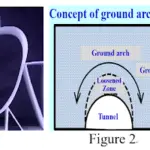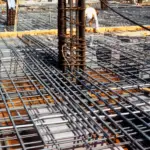In the realm of building construction, the foundation serves as the critical element that supports the entire structure, transmitting the load of the building to the soil beneath. Foundations are broadly categorized into shallow and deep foundations, each serving distinct purposes based on the soil conditions, structure requirements, and other factors. In this article, we will delve into the concept of shallow foundations, highlight the differences between shallow and deep foundations, and explore various types of shallow foundations, along with their respective pros and cons.

Understanding Shallow Foundations
Shallow foundations, as the name suggests, are constructed close to the ground surface and transfer building loads to deeper, more competent soil layers. These foundations are generally employed when the soil near the surface has adequate bearing capacity to support the load of the structure without the need to reach deeper soil layers. Shallow foundations are widely used in residential, commercial, and industrial construction due to their cost-effectiveness and relative simplicity.
Differences Between Shallow and Deep Foundations
- Depth of Placement:
- Shallow Foundations: Typically, shallow foundations are placed within the top layers of soil, generally at a depth equal to or less than the width of the foundation.
- Deep Foundations: In contrast, deep foundations extend significantly deeper into the soil to reach more stable and load-bearing layers.
- Soil Bearing Capacity:
- Shallow Foundations: Rely on the bearing capacity of the near-surface soil to support the load of the structure.
- Deep Foundations: Transfer loads through skin friction along the length of the foundation elements or end-bearing capacity at the base of these elements.
- Types of Structures:
- Shallow Foundations: Commonly used for light to moderately loaded structures, such as residential buildings, small commercial structures, and industrial facilities with relatively low loads.
- Deep Foundations: Ideal for heavy structures, tall buildings, bridges, and structures situated in areas with poor soil conditions.
Types of Shallow Foundations
- Strip Footing:
- Description: Strip footing, also known as continuous footing, is a type of shallow foundation that supports a load-bearing wall or line of closely spaced columns.
- Pros: Distributes loads over a wider area, reducing the pressure on the soil.
- Cons: May not be suitable for irregularly shaped structures.
- Combined Trapezoidal Footing:
- Description: This type of footing combines the features of both strip and trapezoidal footings to enhance load distribution.
- Pros: Provides better load distribution for irregularly shaped structures.
- Cons: Requires careful design and construction to ensure proper load distribution.
- Combined Rectangular Footing:
- Description: Similar to combined trapezoidal footing, but with a rectangular shape for simplicity in design and construction.
- Pros: Simpler design compared to trapezoidal footing.
- Cons: May not be as effective for irregularly shaped structures.
- Isolated Footing:
- Description: Isolated footing supports a single column and is one of the most common types of shallow foundations.
- Pros: Simple design, suitable for individual columns.
- Cons: May not be suitable for structures with heavy, concentrated loads.
- Mat Footing:
- Description: Also known as slab footing, mat footing is a large, continuous slab that supports multiple columns.
- Pros: Distributes loads over a larger area, suitable for heavily loaded structures.
- Cons: Requires careful consideration of soil bearing capacity.
- Raft Footing:
- Description: Similar to mat footing, raft footing is a continuous slab that covers the entire area beneath a structure.
- Pros: Effective for distributing loads over expansive areas.
- Cons: Construction complexity increases with the size of the structure.
- Grillage Footing:
- Description: Consists of steel beams placed at right angles, supporting the load of the structure.
- Pros: Provides flexibility in load distribution.
- Cons: Requires careful detailing and construction expertise.
- Stepped Footing:
- Description: Involves a series of horizontal slabs with varying depths to accommodate changes in soil bearing capacity.
- Pros: Adaptable to uneven soil conditions.
- Cons: Construction complexity increases, requiring precise engineering.
- Stem Wall Footing:
- Description: Utilizes a combination of vertical walls (stems) and a slab to support the structure.
- Pros: Suitable for structures on slopes or uneven terrain.
- Cons: Requires additional excavation and construction effort.
Conclusion
In conclusion, understanding the nuances of shallow foundations in building construction is crucial for engineers, architects, and builders alike. The choice of foundation type depends on various factors, including soil conditions, structural requirements, and the magnitude of loads. Each type of shallow foundation has its own set of advantages and disadvantages, and careful consideration must be given to the specific needs of the project to ensure a stable and reliable foundation for the structure.













